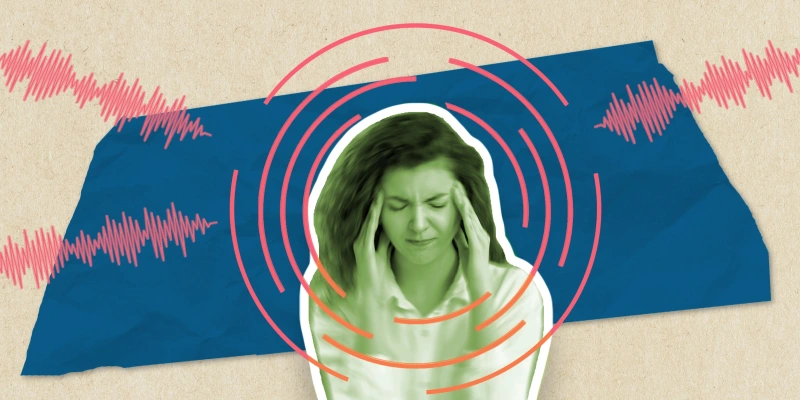Although the pandemic exposed the importance of mental health treatment access, psychiatry is not remotely exempt from today's polarizing sociopolitical climate. Critics are often quick to label our field as dangerous and untrustworthy. Extremists have attributed mass shootings to SSRIs. Psychiatric medications carry a stigma that many other medical interventions do not. However, it would be wrong to dismiss every negative feeling toward psychiatry as ill-informed. In certain arenas of psychiatry, depriving patients of their basic freedoms is standard. As a psychiatry resident, I am very much the opposite of an anti-psychiatry extremist — but I recognize the field's troubling history and the fact that a paternalistic air inherently underlies its practice. In some situations, we medicate people against their will, involuntarily hospitalize them, and use physical restraints and seclusion. The patient hostility that follows should surprise no one.
I’m not necessarily arguing against this paternalism; I relate to it on some level. I’ve already discovered my instinct to recommend hospitalization. I’m cautious by nature. My threshold for danger is low and if I see behavior that I feel could be dangerous to the patient or to someone else, I’m quick to suggest hospitalization with idealistic certainty that a few days of structure, limited stimuli, compassionate care, and medications will help that patient.
This instinctive response doesn’t come from a place of authoritarianism or wanting to be punitive. I genuinely want to keep people safe and I firmly believe in our work. But I’m also aware that patients who are hospitalized involuntarily may not see it that way, and I’m highly cognizant of the fact that some clinicians misuse their positions to abuse, punish, or neglect patients.
Our use of physical restraints does not improve patient experiences with emergency or inpatient psychiatry. Although we have strict protocols for restraints and try to use them judiciously, the experience is invariably upsetting and can be traumatizing for patients.
My first restraint order has been on my mind for months. I had an elderly patient, Mary, who had been admitted for deliberate medication overdose after a family argument in which she alternated between berating her daughter-in-law and weeping piteously that she, Mary, deserved to die. A few hours with Mary and her collateral revealed cognitive decline.
Mary continued to feel confused, hopeless, and suicidal; transfer to our geriatric unit was arranged. But she wasn’t having it. A nurse rushed into the clinician office breathlessly: “Chloe, I need a restraint order, she’s gonna get hurt, or hurt someone.”
I came out to assess the commotion. “No, no, I won’t go!” Mary screamed, clinging to the bed. “It’s my bed, it’s MY room, and I didn’t do anything wrong!” Verbal redirection had failed, medications were ineffective, and Mary had already bitten someone. Another staff member was about to discover that she had a mean kick and solid right hook.
I wrote the order.
It would have been easy to be angry with this recalcitrant older patient who physically attacked several staff members, and it might have been something of a relief to have her in restraints for transport. Per protocol, restraints were entirely justified for patient and staff safety. But I felt sick.
Mary had told me things like “I feel unwanted and unloved in my own home.” Crying, she had said: “No one wants me; they’re just waiting for me to die. I’m a burden to my family. I don’t blame them; I’m nasty to them.”
Looking at her, I could imagine what it would feel like to be in her shoes. I might feel worthless, increasingly a stranger. I could imagine lashing out, desperate to provoke some kind of reaction, to see if my family really loved me or if they wanted me gone. I could imagine experiencing internal torment so intolerable that I would make the decision to take a bottle of pills. I could imagine being moved against my will and feeling trapped and angry. As I contemplated Mary’s predicament, I thought that maybe I too would bite a nurse.
I saw two people in the moment: the first was a furious, physically violent patient who posed an imminent risk of harm to herself and others. The second was a frightened, confused woman who did not understand what she could have done to deserve having her freedom and agency so brutally stripped from her. She fought. I imagine many of us would have done the same.
If I had to do it all over again, I wouldn't have changed our evaluation and decision-making. Safety needed to be prioritized. But one thing I would do would be to find Mary later and tell her I was sorry — not for our decision, but for her fear. We can all afford the little moments of compassion and grace; they cost us nothing.
Although I love my field, I can understand aversion to psychiatry. Our measures for maintaining safety in the moment and our efforts to stabilize acutely ill patients may inadvertently breed fear, distrust, and hatred, even if circumstances sometimes necessitate them. Thus, we owe it to our patients and our profession to treat these methods with respect, using them discriminately and thoughtfully.
I doubt ordering restraints will become easier for me, but a little moral distress with every restraint order is a good thing: it reminds us of the threads of humanity that connect clinicians and patients and forces us to think about our power in the clinical environment with humility. The cognitive work of putting ourselves in the patient’s position and understanding their distress and fear at being instructed to cede control almost entirely to us is highly worthwhile. By intentionally making time for it, we make ourselves better doctors and better people.
How do you square safety measures with respect for patients' agency? Share your strategies in the comments.
Chloe Lee is a resident physician in psychiatry. Her interests include psychotherapy, narrative medicine, trauma disorders, and women's mental health.
Name and identifying details have been changed to protect patient privacy.
Image by Rikke / Shutterstock







